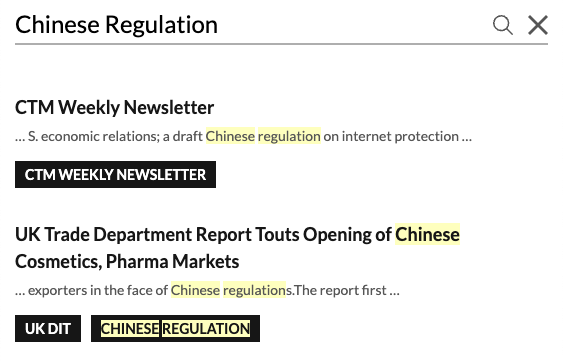China’s Customs Tariff Commission of the State Council issued a notice promulgating the “Import and Export Tariffs of the People’s Republic of China (2020) ” (《进出口税则(2020)》) on December 30, 2019. The notice sets the basic tariff rates and rules for 2020.
The “Import and Export Tariffs” is a component of the “Import and Export Tariff Regulations.” It includes import and export tariff lines, tariff rates, classification rules, and tariff policies. It provides the basis for tariff calculations at Customs. There are several takeaways from the 2020 version.
- The import and export tariff lines in the 2020 version are the same as those of the 2019 version; no changes have been made.
- The MFN tariff rate, provisional import tariff rates, agreed tariff rates and preferential tariff rates in the 2020 version have been adjusted according to the Notice of the State Council Customs Tariff Commission on Adjustments to the Tentative Import Tariff Rates (Shuiweihui [2019] No. 50) (《关于2020年进口暂定税率等调整
方案的通知》(税委会〔2019〕50号)) . - If there are other rules on tariff lines or tariff rate adjustments under separate laws, administrative regulations, and provisions, these other rules shall take precedence. Examples of these rules likely include tariff rates applied on U.S. imports as countermeasures to the U.S. Section 301 tariffs.
The Notice of the State Council Customs Tariff Commission on Adjustments to the Tentative Import Tariff Rates (Shuiweihui [2019] No. 50) referred to in the 2020 version was released on December 18, 2020. It has five attached forms.
- Tentative import tariff rates: China will begin implementing tentative tariff rates on 859 tariff lines.
- Applied MFN tariff rate for some information technology products: The reduced tariff rates will take effect on July 1, 2020.
- Tariff rates for TRQs: The TRQs for 8 commodities, including wheat, remain unchanged.
- Tariff rate for export commodities: The export tariffs on 107 commodities remain the same.
- Specific tariff rates based on FTAs: Tariff rates will be further reduced on January 1 as a result of bilateral FTAs with New Zealand, Peru, Costa Rica, Switzerland, Iceland, Singapore, Australia, South Korea, Chile, Georgia, Pakistan, as well as the Asia-Pacific Trade Agreement. On July 1, tariff rates will be cut further according to bilateral FTA with Switzerland and Asia-Pacific Trade Agreement.
All least developing countries will continue to enjoy GSP (Generalized System of Preferences) status, with the exception of Equatorial Guinea. Starting from January 1, Equatorial Guinea will stop receiving GSP status.

